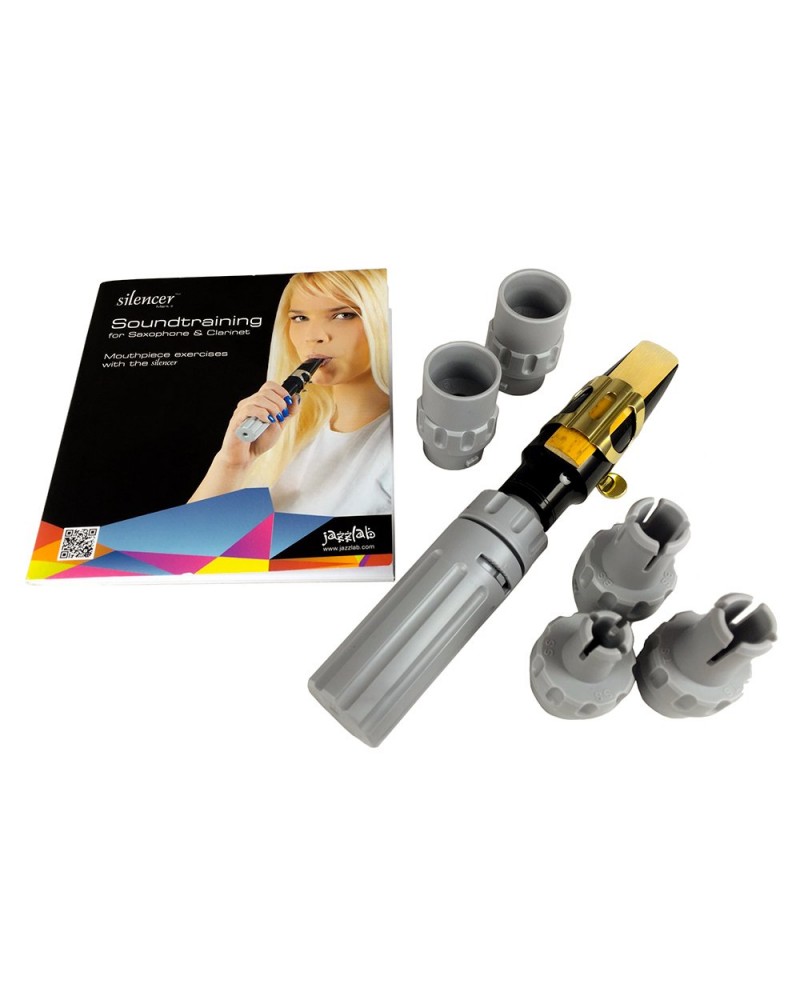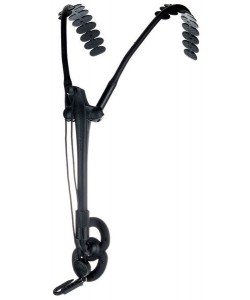JAZZ LAB - SILENCER Mouthpiece Mute
FREE SHIPPING FOR ALL EUROPE. (Only buying this product)

Secure payment

Shipping in 24-48h

Return guarantee
A lot of people are often surprised when they realize that you can produce tones and whole melodies with the mouthpiece of a saxophone or a clarinet alone. What it sounds like depends solely on the person who is blowing into the mouthpiece because everything that comes out is only affected by the person who is blowing.
-
How can we understand this?
These findings prompted Joe Allard, the grand master of the woodwinds, to develop a new method of training and suitable exercises, among which are the mouthpiece exercises. With these exercises Joe Allard documented astonishing results while having comparatively little expenditure of time. Among his students were saxophonists as David Liebman, Michael Brecker, Stan Getz, Bob Berg and Glenn Miller’s whole sax-section.
-
Improving the sound continually
Mouthpiece exercises for woodwinds are one of the best methods to continually improve the sound. Furthermore, one can train the embouchure, the breathing and the articulation optimally. Daily exercises – 5 minutes are enough – are the key to a higher level of sound and intonation on the instrument. Through mouthpiece exercises you train exactly those muscles that are crucial to the playing of a saxophone or a clarinet:
- - for the sound
- - for the intonation
- - for special effects as vibrato or bending
- - for high tones
-
Music is associated to noise
Basically, one can take the mouthpiece to any place and exercise on it everywhere. For example; on the train, in a car, (only with a turned off motor of course) or in a hotel room. But practically there is one serious disadvantage: The tone produced by the mouthpiece is approximately 100 dB loud and therefore trouble with passengers or hotel guests, as well as neighbors, is already pre-programmed!
Wilhelm Busch said: “Music is often found to be disturbing because it is connected to noise.” What is loud music for one person is noise for another. Whoever wants to hear music does not feel disturbed. Whoever likes turning up the volume does this without the feeling that it is noise. The ears are a sensitive organ and what is sensed as noise depends mainly on the ability to influence the sound. Moreover, it depends on the sound, whether it sounds more or less harmonic, whether it screeches, whistles, bangs, rumbles or hammers.
«Making music is one of the basic rights of a human and can therefore not be forbidden!” This phrase stems from a judgment. Whoever plays an instrument has to practice; he has to practice even more if he is a professional musician. However, for the neighbors it is mostly more than just a disturbing sound!»
-
Avoiding conflicts
In order not to disturb the neighbors one has to become quieter. Here the silencer produces relief! With a put-on mouthpiece-mute the volume is reduced significantly: It reduces the volume by 14 to 20 decibels! In other words: The volume heard by a human is 5 to 10 times quieter. The fact is, you hear the volume a multiple quieter with the silencer. You can practice very quietly at any time – whether night or day – and at any place!
-
The silencer®
The silencer is available in five different versions:
- - for soprano sax,
- - for alto sax,
- - for tenor sax,
- - for bari sax,
- - for clarinet










